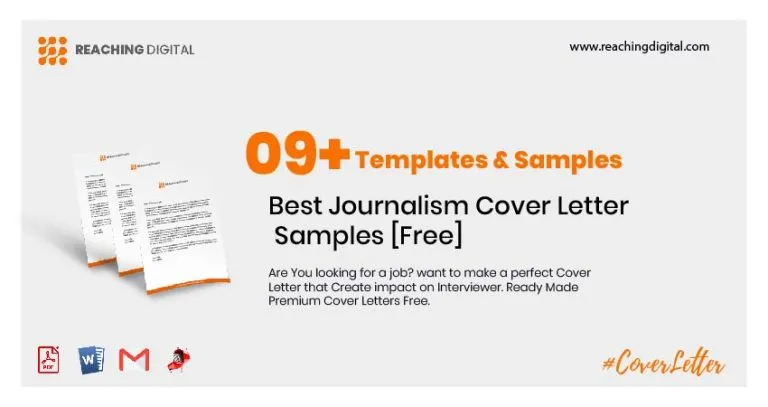Understand the Purpose of a Journalism Cover Letter
A journalism cover letter is more than just a formality it is your first chance to make a compelling impression on a potential employer. It serves as an introduction, a showcase of your skills, and a demonstration of your passion for journalism. Unlike a resume, which lists your experience, the cover letter allows you to tell your story and explain why you are the perfect fit for the specific role and publication. It’s your opportunity to connect with the hiring manager on a personal level and highlight what makes you unique. A well-crafted cover letter can significantly increase your chances of landing an interview and ultimately, the job. Think of it as your personal pitch, designed to capture the reader’s attention and convince them of your potential.
What to Include in a Journalism Cover Letter
Structuring your journalism cover letter effectively is key to conveying your message clearly and concisely. Each section plays a crucial role in showcasing your qualifications and enthusiasm. From the header to the closing, every element should work together to create a cohesive and impactful narrative that highlights your strengths and aligns with the publication’s needs.
Your Contact Information
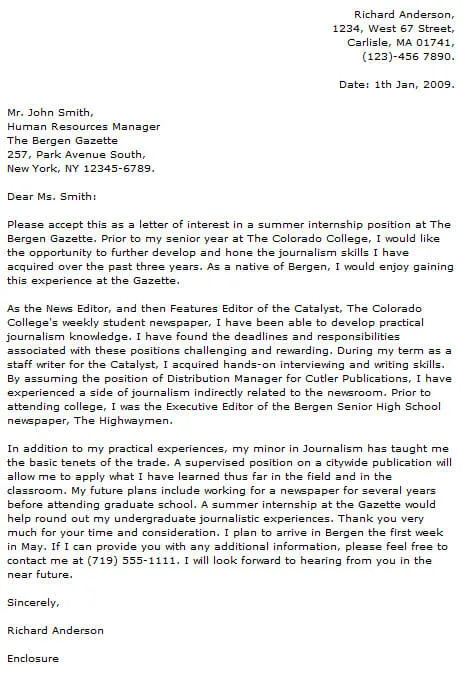
Begin your cover letter with your contact information. This typically includes your full name, phone number, email address, and LinkedIn profile URL (if you have one). Ensure that the information is accurate and professional, so the hiring manager can easily reach you. Place this information at the top left or right of your letter, creating a clean and accessible header. This section ensures that the employer can easily contact you if they are interested in moving forward with your application. Double-check that your email address is professional and free of any unprofessional usernames.
The Date
Below your contact information, include the date you are writing the letter. This is a standard practice that provides a reference point for the hiring manager and helps them keep track of the application’s timeline. The date should be formatted consistently, using either the month-day-year or day-month-year format, depending on your preference or the norms of your region. Ensure the date is current, as it indicates that your application is recent and relevant.
The Hiring Manager’s Information
Research the name of the hiring manager or the editor to whom you are addressing your cover letter. If you cannot find a specific name, use the title of the person responsible for hiring (e.g., Hiring Manager, Editor-in-Chief). Addressing the letter to a specific person shows that you’ve taken the time to personalize your application and demonstrates your attention to detail. This also shows that you are committed to the opportunity and have researched the publication properly. If a name is unavailable, use a professional title.
The Salutation
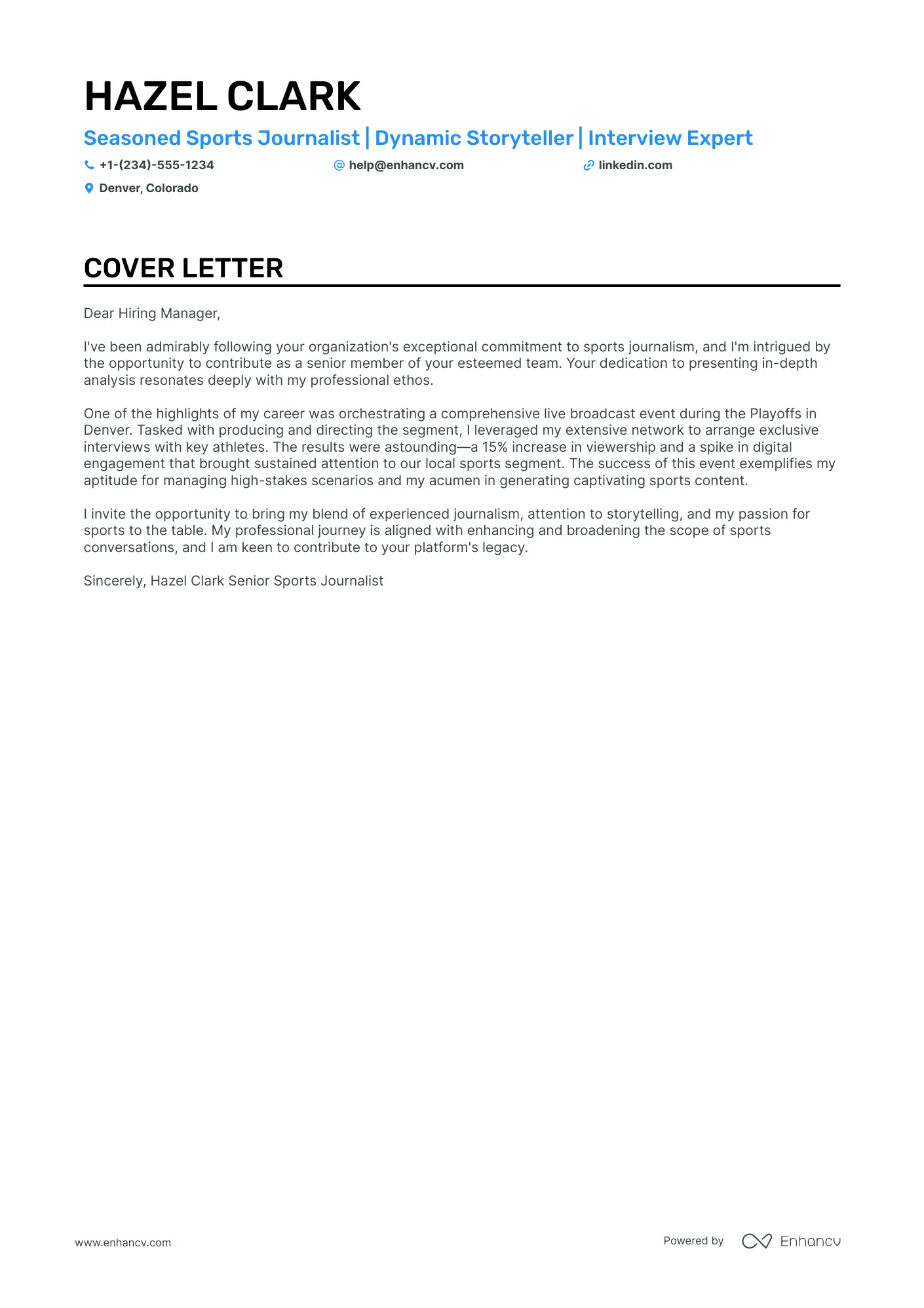
Use a professional salutation. If you know the hiring manager’s name, use “Dear Mr./Ms./Mx. [Last Name]”. If you don’t have a name, use “Dear Hiring Manager” or “Dear Editor”. Avoid generic greetings like “To Whom It May Concern”. A personalized salutation immediately grabs the reader’s attention and sets a professional tone. Make sure you spell the name correctly to show respect.
Crafting the Opening Paragraph
The opening paragraph is your first opportunity to make a strong impression. Clearly state the position you are applying for and where you saw the job posting. Briefly mention why you are interested in the role and the publication. Keep it concise and engaging. The goal is to pique the reader’s interest and encourage them to continue reading. Avoid generic introductions; instead, highlight something specific that makes you stand out or connects you to the publication’s mission or values. Your opening paragraph should set the tone for the entire letter.
Highlighting Relevant Experience and Skills
This section is where you demonstrate your qualifications for the role. Focus on the experiences and skills that are most relevant to the job description. Provide specific examples of your work, and quantify your achievements whenever possible. Instead of simply listing your responsibilities, explain how your actions have benefited your previous employers or publications. Tailor this section to match the requirements of the specific job you are applying for. Use keywords from the job description to show you are a good fit. The goal is to convince the hiring manager that you have the skills and experience necessary to excel in the role.
Showcasing Your Writing Samples
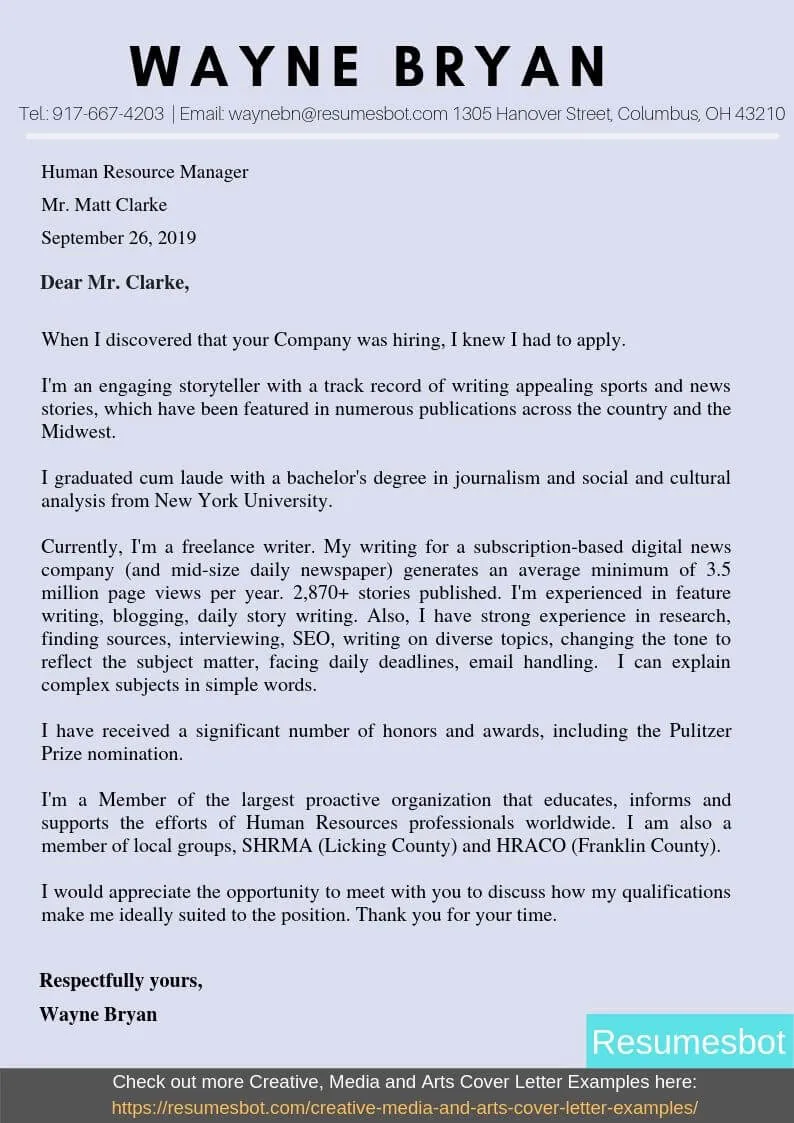
Journalism is a field where your work speaks for itself. Include links to your best writing samples. Choose pieces that align with the publication’s style and the role you are applying for. Provide a brief summary or context for each sample, explaining why you chose it and what it demonstrates about your skills. If the publication requires a specific type of writing (e.g., investigative reporting, feature writing), make sure your samples reflect this. Make it easy for the hiring manager to review your work by providing direct links and clear descriptions. Ensure that your writing samples are of high quality and showcase your best work. Include different samples to demonstrate your versatility.
Quantifying Your Achievements
Use numbers to demonstrate the impact of your work. Instead of saying “I increased readership”, say “I increased readership by 30% in six months”. Quantifiable achievements provide concrete evidence of your abilities and make your cover letter more impactful. Use metrics to show the value you brought to previous roles, such as the number of articles written, the reach of your content, or any awards or recognition you received. This demonstrates that you not only have the skills but also that you can produce results.
Demonstrating Knowledge of the Publication
Show the hiring manager that you are familiar with their publication. Mention specific articles, sections, or initiatives that resonate with you. Demonstrate that you understand the publication’s target audience, style, and mission. Explain why you are interested in writing for them and how your skills align with their goals. This shows that you are not just applying for any job, but that you have a genuine interest in the publication. The more specific you are, the better. It shows your enthusiasm and initiative to thoroughly research the company. This personalization helps make you stand out.
Explaining Your Motivation
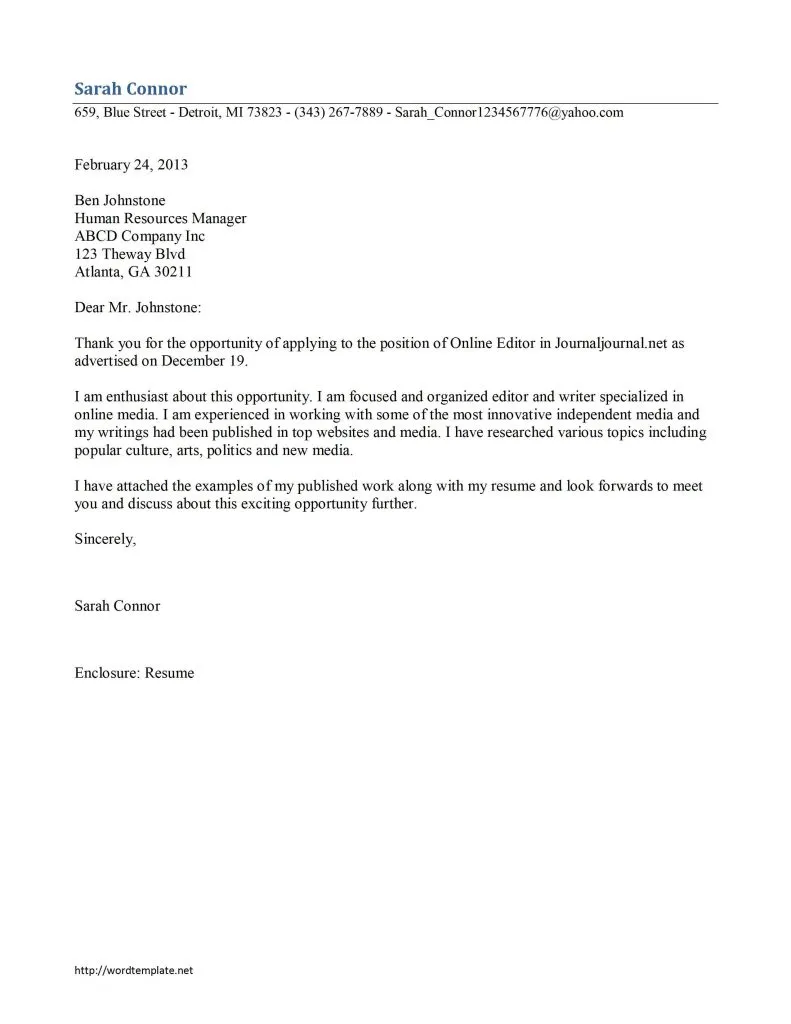
In this section, clearly articulate why you are interested in the specific role and the publication. What aspects of the job excite you? Why do you want to work for this particular outlet? Explain your career goals and how this position aligns with them. Show your passion for journalism and your commitment to producing high-quality work. Provide details that reflect your interest in their work. Explain your enthusiasm for the opportunity and why you’re a good fit. Your passion for the field of journalism should shine through. Your motivation should be clear and compelling, showcasing your long-term goals and ambitions within the industry.
Expressing Enthusiasm and a Call to Action
End your cover letter with a strong call to action. Reiterate your interest in the position and express your enthusiasm for the opportunity. Thank the hiring manager for their time and consideration. Include a clear statement that you are available for an interview and provide your contact information again. Encourage them to reach out to you. A strong call to action reinforces your interest and makes it easy for the hiring manager to take the next step.
Proofreading and Editing Your Cover Letter
Before submitting your cover letter, meticulously proofread and edit it for any errors. Spelling mistakes, grammatical errors, and typos can undermine your credibility and demonstrate a lack of attention to detail. Read your cover letter aloud to catch any awkward phrasing or sentences. Have a friend, colleague, or mentor review your letter as well. They may catch errors you missed. Ensure that your cover letter is well-written, clear, and error-free. A polished cover letter reflects professionalism.
Formatting Your Cover Letter
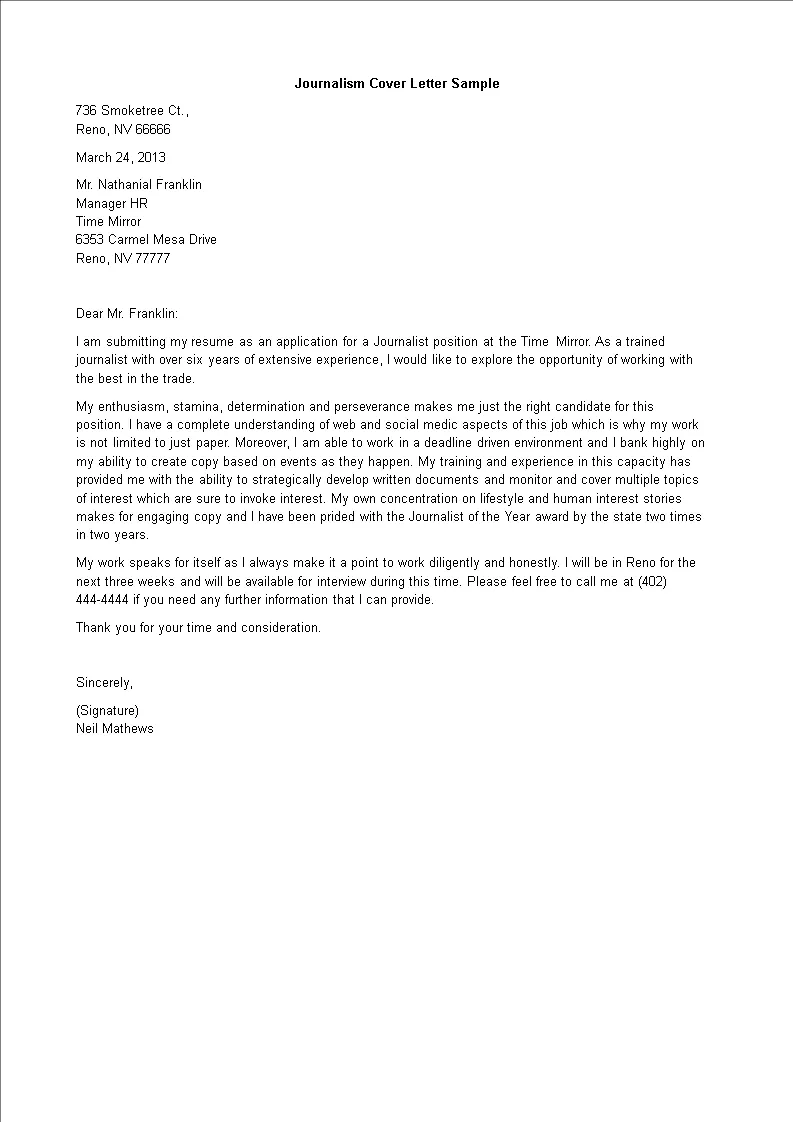
Pay attention to the formatting of your cover letter. Use a professional font such as Times New Roman, Arial, or Calibri, and ensure that the font size is easy to read (typically 11 or 12 points). Use clear and consistent spacing throughout the letter. Keep your paragraphs concise and well-structured. Use a clean and uncluttered layout, making it easy for the hiring manager to scan and read the document. Well-formatted cover letter reflects your attention to detail and professionalism. The format should be clean and easy to follow, with proper spacing and margins.
Tailoring Your Cover Letter
Customize each cover letter to the specific job and publication. Avoid using a generic template. Research the publication and tailor your letter to their style, tone, and values. Highlight the skills and experiences that are most relevant to the specific role. Mention the name of the publication in the cover letter itself. The more specific your cover letter is to the opportunity, the more likely it is to grab the reader’s attention. Use keywords from the job description throughout your letter. This personalized approach demonstrates that you have taken the time to understand the role and the publication.
Common Mistakes to Avoid
Certain mistakes can significantly reduce your chances of getting hired. Being aware of these pitfalls and taking steps to avoid them will strengthen your application and increase your odds of success. These mistakes can range from poor grammar to a lack of research. By avoiding common mistakes, you can ensure that your cover letter presents you in the best possible light.
Grammar and Spelling Errors
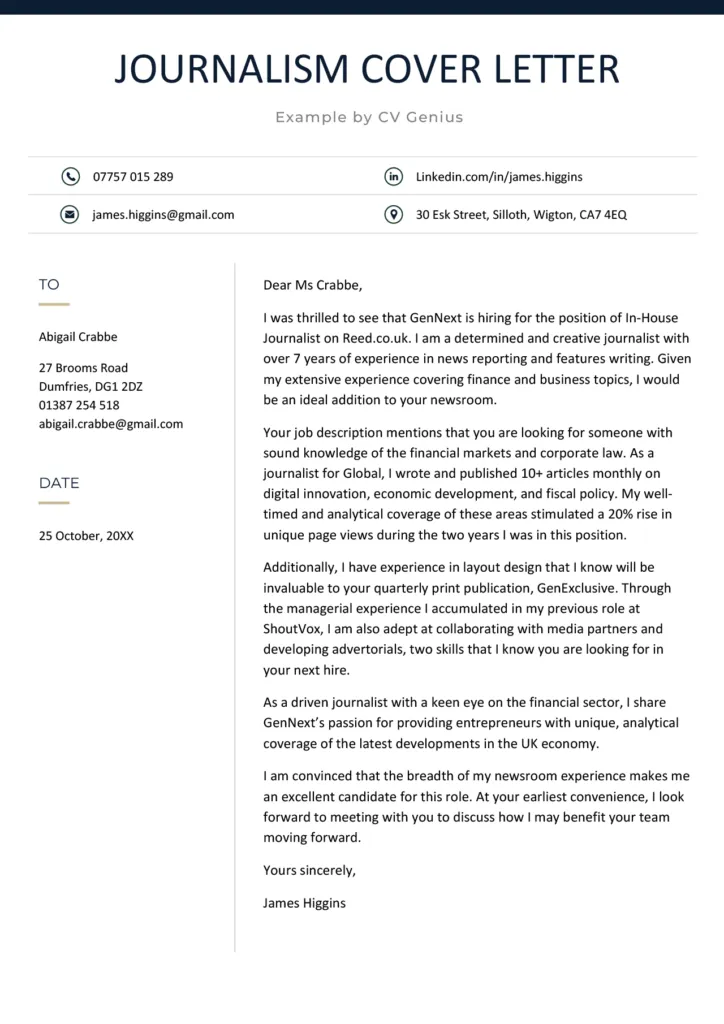
Carelessly written cover letters with errors will be immediately discarded. Proofread your letter multiple times. Use grammar and spell-check tools, but also read the letter carefully to catch mistakes that automated tools might miss. Having errors in your cover letter can reflect badly on your attention to detail and professionalism. It shows a lack of care and interest. Make sure the cover letter is well-written and free of grammatical errors and typos. Always double-check your work.
Generic Cover Letters
Avoid using the same cover letter for multiple applications. Tailor your letter to each job and publication. Generic cover letters lack the personalization and specificity that employers are looking for. Generic templates don’t show enough about your interest in the specific role. Customize your letter to reflect your understanding of the publication and the role. Use the job description as a guide to showcase the skills and experiences most relevant to the position. Make each cover letter unique to the job.
Failing to Research the Publication
Show a genuine interest by researching the publication and understanding their content, mission, and audience. Failing to mention specific articles, sections, or initiatives will make your letter seem impersonal. Take the time to read recent articles and familiarize yourself with the publication’s style and tone. Researching the publication is the essential part to show them that you are interested. Demonstrating knowledge of the publication helps set you apart. This shows you’ve done your homework and are genuinely interested in the opportunity.
Length and Tone of the Cover Letter
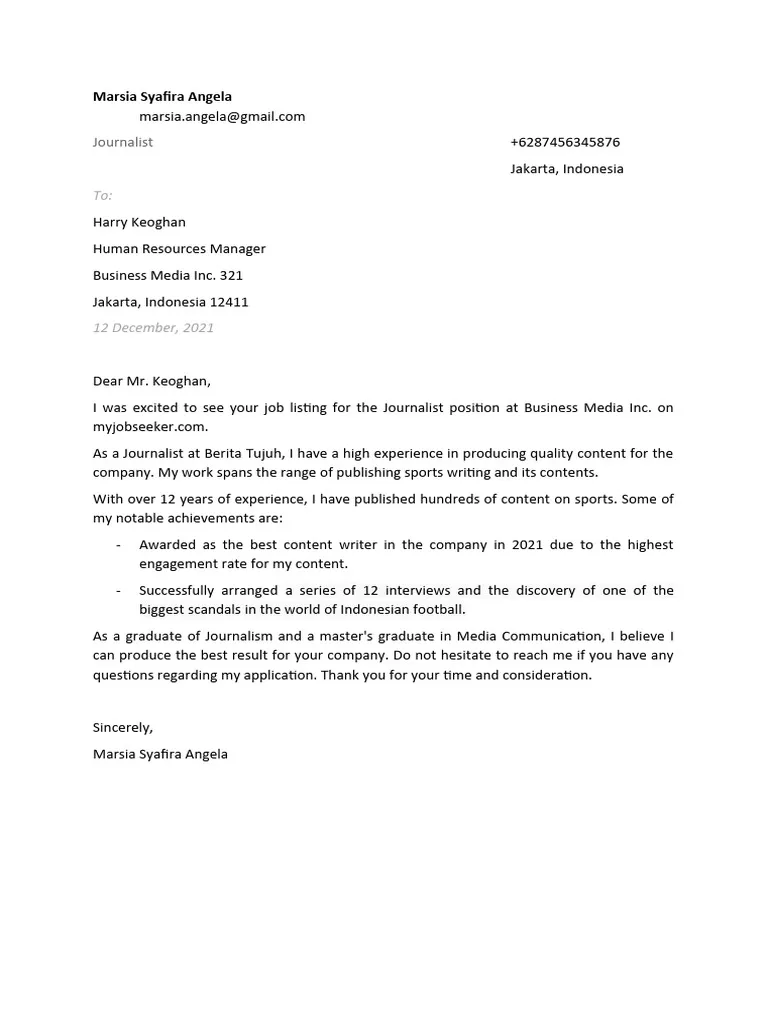
Keep your cover letter concise and focused, aiming for one page in length. Use a professional and enthusiastic tone throughout the letter. Show your passion for journalism and your excitement about the opportunity. Avoid being overly formal or using jargon. Write in a clear and engaging style that reflects your personality. A well-written cover letter should be a reflection of your personality and skills, but also professional. The tone needs to be both enthusiastic and professional, striking the right balance to make a great first impression. Be mindful of the tone of the publication, and reflect that in your writing.
